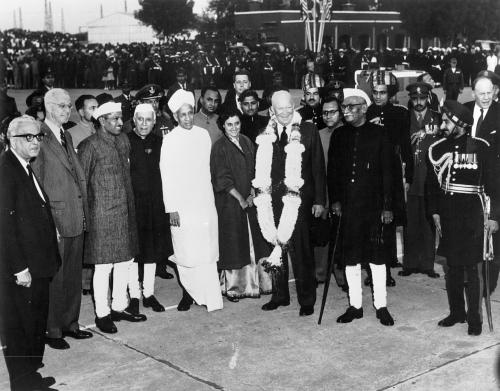As I previewed earlier this week, the Australian and Japanese foreign ministers, the Indian external affairs minister, and the U.S. secretary of state met in Tokyo on October 6 for the second ministerial of the Quadrilateral, or “Quad.” My previous post included charts explaining the evolution and the activities of the Quad ahead of the ministerial. Now that the meeting has taken place, let’s take a look at the outcomes, including what emerged from it and what didn’t.
While the Quad ministers did not release a joint statement, Australia, India, Japan, and the U.S. did issue readouts. They provide a sense of the agenda, as well as where there is — and is not — overlap. The separate readouts also give some additional details. For instance, the Japanese one noted that North Korea and the South China Sea came up for discussion; the Australian and Indian ones mentioned the delivery of safe and effective COVID-19 vaccines; and Canberra’s document highlighted the subject of critical minerals.

In their readouts as well as their opening statements, each Quad country also outlined its vision of the kind of Indo-Pacific it would like to see. All four also emphasized the importance of working with other like-minded partners (even beyond the Association for Southeast Asian Nations, or ASEAN). Japan mentioned European partners, in particular. As expected, no announcement was made about including Australia in the U.S.-India-Japan MALABAR maritime exercise, but Indian official sources indicated that an announcement would be made before the exercise in November.

While most of the countries did not explicitly mention China, there were various implicit references to it. Secretary of State Mike Pompeo was the exception, mentioning the Chinese Communist Party in particular. The lack of consensus on whether or not — and how — to mention China might be one reason why the countries did not release a joint statement. Nonetheless, in a subsequent press availability, American officials made clear that China was discussed. They also indicated that Beijing’s behavior vis-à-vis Australia, India, and Japan over the last few months — rather than the Trump administration’s urging — increased their enthusiasm for the Quad.

The 2020 ministerial was the first standalone meeting of the Quad — previous minister-level and working-level meetings have taken place on the sidelines of other summits. The readouts of the four countries noted the importance of regularizing the ministerial, as well as continuing working-level and subject experts’ meetings. The visit to Tokyo also provided an opportunity for Minister Marise Payne, Minister S. Jaishankar, and Secretary Pompeo to meet with new Japanese Prime Minister Yoshihide Suga, as well as for the four countries to have bilateral meetings with each other.

The Brookings Institution is committed to quality, independence, and impact.
We are supported by a diverse array of funders. In line with our values and policies, each Brookings publication represents the sole views of its author(s).







Commentary
This week’s Quad ministerial meeting, in four charts
October 8, 2020